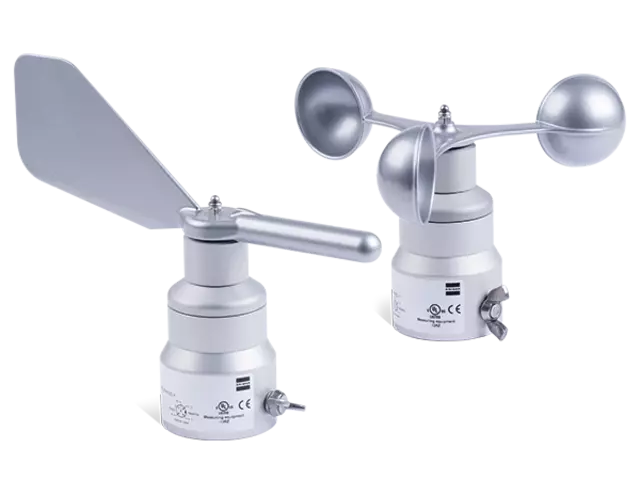2024-07-11 Renewable energy, Products
Everything You Need to Know About Wind Sensors
Wind sensors play a crucial role in numerous applications, from weather forecasting to wind energy generation. In this blog post, you'll learn everything you need to know about these essential devices, including the different types of wind sensors, how they work, and how they are used in various industries. We also answer frequently asked questions such as "What do you do with an anemometer?" and "What is the device called that measures wind strength?"
Wind sensors can be broadly categorized into two main types: anemometers and wind direction sensors.
Anemometers are primarily designed to measure wind speed. There are various types of anemometers, including cup anemometers, vane anemometers, and ultrasonic anemometers, all of which use different measurement principles but share the same goal – accurately determining wind speed.
Wind direction sensors, on the other hand, often referred to as wind vanes or wind direction indicators, measure the direction from which the wind is blowing. These sensors are also crucial for many applications, as knowing the wind direction along with the wind speed allows for a comprehensive analysis of wind conditions. In many modern meteorological stations and wind energy installations, both types of sensors are used together to provide a complete and precise assessment of wind conditions.
Learn more about our KRIWAN wind sensor products: INT10 and INT30

A wind direction sensor, also known as a wind vane or wind direction indicator, is an instrument that measures the direction from which the wind is blowing. The wind direction indicator shows the cardinal direction the wind is coming from. It consists of a vane that aligns itself with the wind. Sailors, pilots, and meteorologists rely on this information to make informed decisions.
An anemometer, also known as a wind sensor, is primarily used to measure wind speed. Meteorologists use anemometers to monitor weather conditions and make forecasts. In the wind energy sector, anemometers are used to determine the optimal location for wind turbines and to maximize energy production. Additionally, sailors and pilots use anemometers to plan safe and efficient sailing and flight routes.
Learn more about wind monitoring for wind turbines here.

Robust Construction
Our cup anemometers and wind direction sensors are specifically designed for extreme environmental conditions. They withstand storms, hail, and freezing rain. The integrated self-regulating heater ensures that the sensors operate reliably even in icy temperatures, providing accurate data on wind speed and direction. Whether for wind turbines, photovoltaic systems, or meteorological applications, our sensors ensure precise measurements for efficient energy production.
Learn more about our wind sensors here
More about our protective relays for the water and wastewater industry.Types of Anemometers
There are several types of anemometers, each utilizing different measurement principles. The most common types include:
Cup anemometers consist of three or four hemispherical cups mounted on a vertical shaft. When the wind turns the cups, the rotational speed is measured and converted into wind speed. This type of anemometer is particularly robust and is commonly used in meteorological stations.
The vane anemometer resembles a small windmill and measures wind speed by counting the number of rotations of the vane per unit of time. It is less robust than the cup anemometer but offers greater accuracy at lower wind speeds.